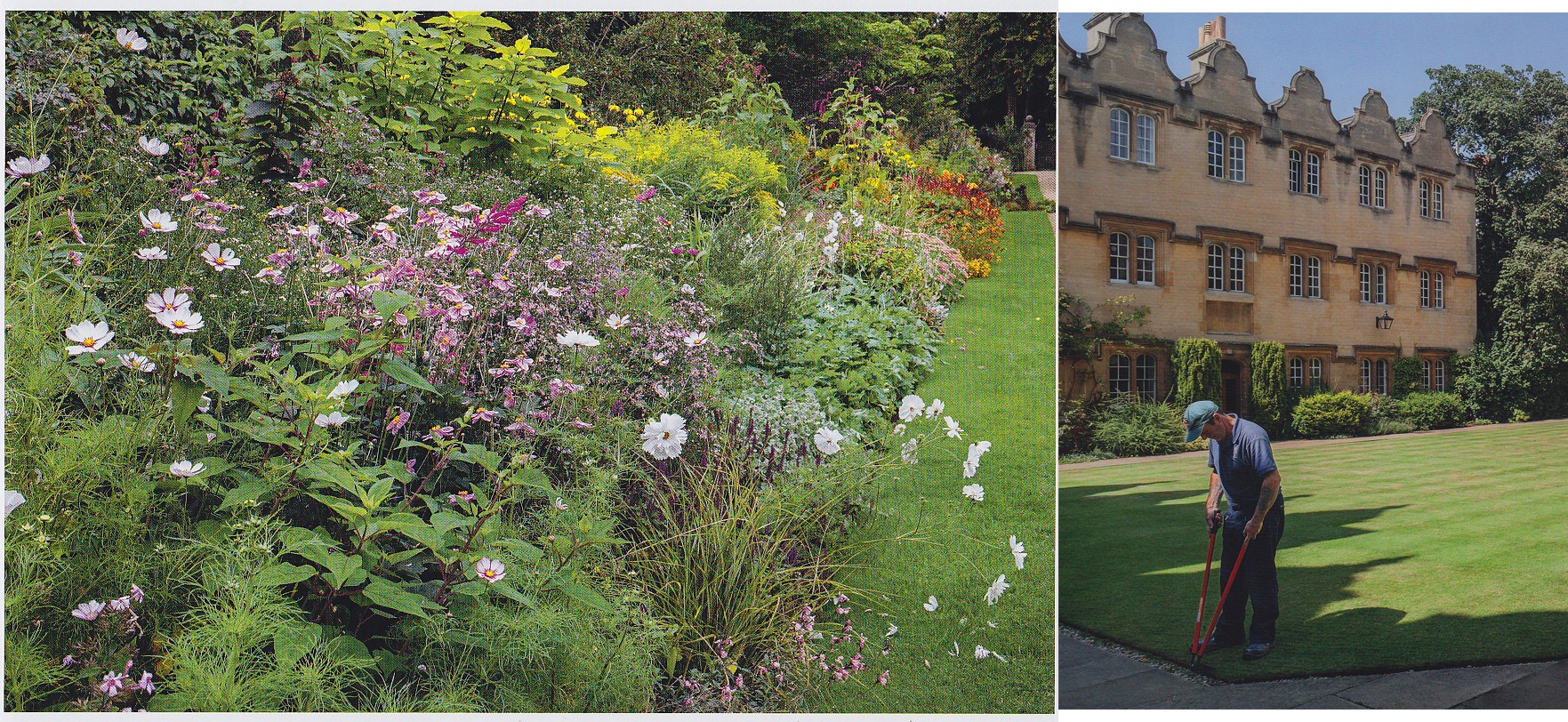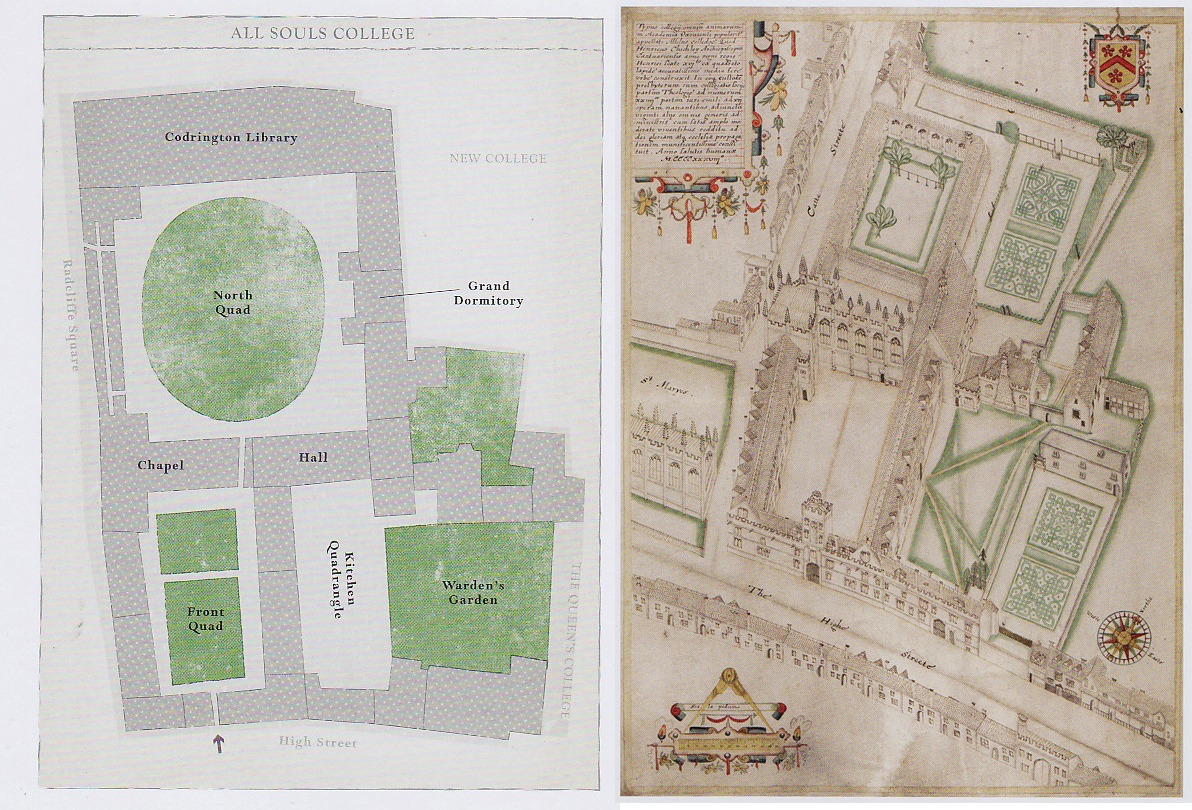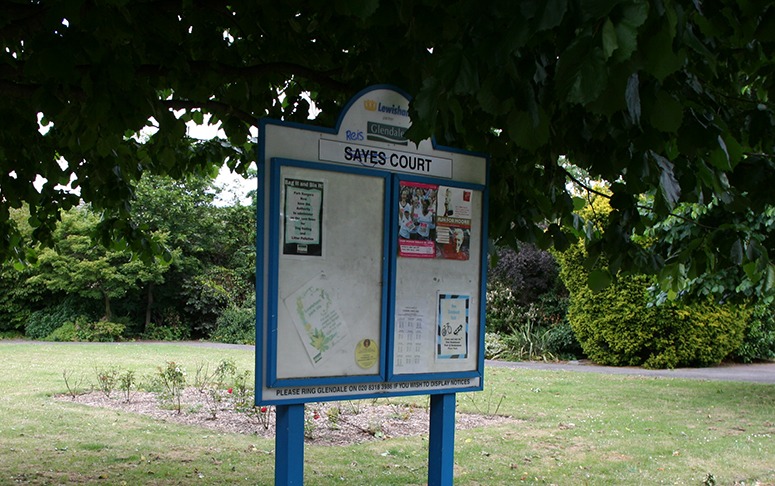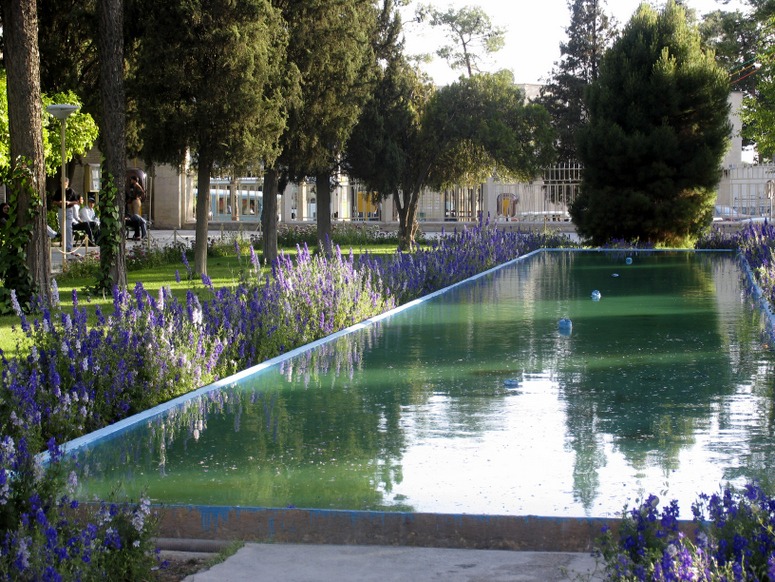
Oxford Colleges have plumped for the National Trust Style of Planting design (right) and are lucky to have excellent gardeners (left)
Tim Richardson (Author), Andrew Lawson (Photographer) Oxford College Gardens Frances Lincoln 2015 ISBN-13: 978-0711232181
Tim Richardson’s text is excellent. Andrew Lawson’s photographs are excellent. Tim is the best informed and most readable of contemporary British garden historians. Andrew is a technically skilled photographer with artistic talent. Working together, they have given us a biography and portrait of Oxford’s colleges and their gardens.
Oxford College gardeners have done a great job too, century after century, and Tim does them justice. But from my standpoint they are too fashion conscious and too determined to make the college gardens look as though they belonged to the National Trust. Modern additions would be welcome but more historical traditions could have been conserved.

Plans of All Souls College Gardens. The new plan (left) has no information on planting design. But the 1598 plan (right) is rich in information.
I have three criticisms of the book. First, there is a lack of integration between the text and the illustrations. Too many of the photographs were taken ‘in the garden’ rather than ‘of the garden’. They therefore fail to illustrate interesting points which the author has made.
A second criticism concerns the specially drawn plans. Plans are very welcome and I wish garden writers made more use of them. But this set of plans does not show the planting which everyone agrees to be a key feature of gardens – and many see as their defining feature. No trees, no shrubs, no hedges, no herbaceous plants. The plans only show buildings, water, paving and a green tone which might be grass. Future historians could have been very grateful for information about the planting design.
A third criticism is the lack of historical illustrations. There are a few – but there are far too few. Oxford is particularly rich in drawings, paintings, engravings and photographs. It would be great to see more of them. For example: p.35 refers to David Loggan’s engraving of Balliol. It is freely available on the web but it is not in the book; p.51 refers to Loggans drawing of Christ Church showing parterres.
One of its most enjoyable aspects is the balance between comment on the colleges and on their gardens. I knew little of the separate histories of the colleges and found that, as well as being of great interest, they helped me make sense of the gardens. Perhaps the title should have been Oxford Colleges and their gardens. A good map shows the locations of the colleges but there are no details of opening times.
Let me conclude by saying again: I really enjoyed reading the text and looking at the pictures.


